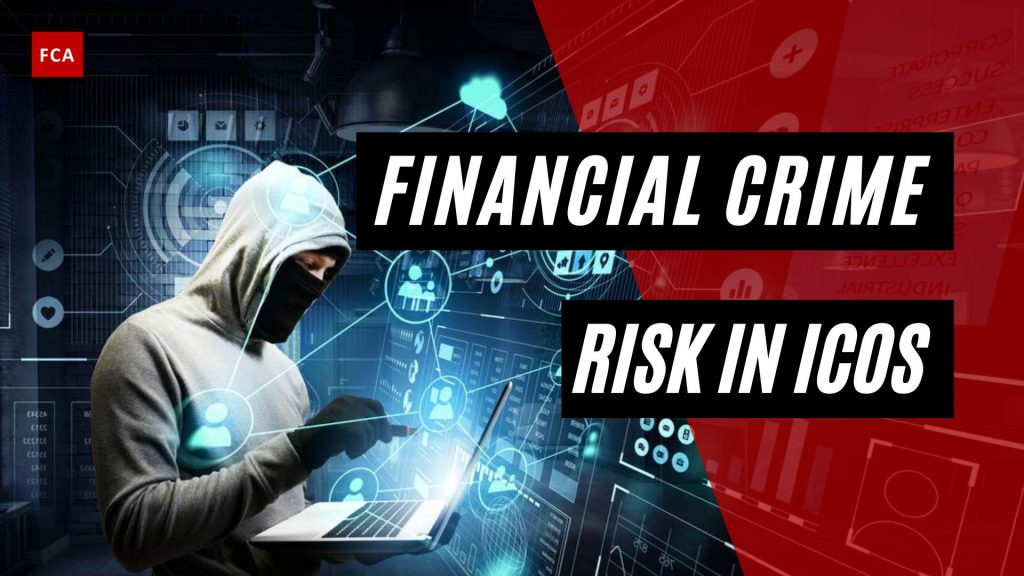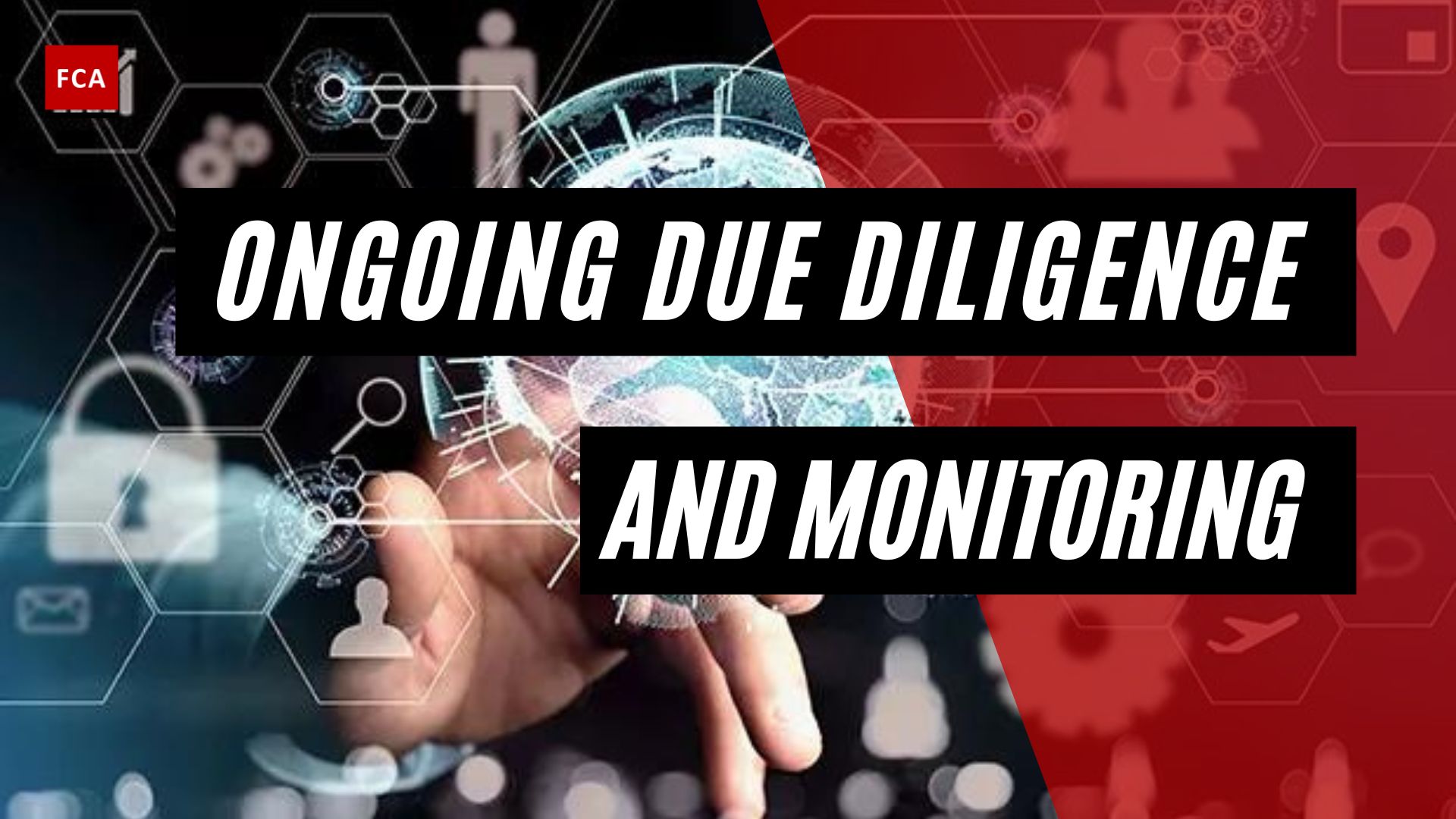Financial crime risk in ICOs. The Initial Coin Offerings or ICOs is a popular fundraising method used primarily by start-ups wishing to offer products and services, usually related to cryptocurrency and blockchain. Some ICOs have yielded massive returns for investors. Numerous others, however, have turned out to be frauds or have failed or performed poorly. In particular, you will learn why ICOs can be an ideal opportunity for criminals even if they don’t have to be.

Financial Crime Risk In ICOs
ICOs are currently vulnerable to misrepresentation, fraud, and manipulation. ICOs may also be structured so that they are not subject to supervision by a prudent regulator. In addition, due to their unregulated status and the anonymous nature of the transactions, ICOs are attractive for laundering money obtained by illegal means. The current hype surrounding cryptos and ICOs may blind investors to these risks.
There are increasing reports in the media about consumers investing in ICOs with money intended for later or even with large amounts of borrowed money. They are afraid to miss the boat and hope that the price of the tokens will rise as explosively as the price of Bitcoin. The promise of high returns can, however, make investors blind to the serious risks associated with ICOs. Combined with the recent explosive growth of ICOs, which displays all the hallmarks of hype, these risks form a dangerous cocktail for investors. Investors run the risk of losing their entire investment.
The first financial crime risk factor describes ICOs as an ideal means for fraudsters. The cross-border nature of blockchain technology means that private investors worldwide can participate in an ICO. At the same time, blockchain technology’s anonymous and cross-border nature enables advanced forms of a traditional pyramid scheme that are difficult to recognize. The current hype of ICOs thus forms an ideal opportunity for fraudsters to take advantage of investors who are afraid to miss the boat.
There have been several fraudulent ICOs worldwide, so let’s look at an example in the United States. The Securities and Exchange Commission has recently brought charges against the issuers of two ICOs: the REcoin Group Foundation and DRC World. Among other things because they have provided false and misleading information to investors. They promised high returns from activities about real estate and diamonds while the providers were not involved in any of the promised activities.
The second financial crime risk factor is the exaggeration of expected returns. Many investors let themselves be tempted by the promise of tremendous returns. However, they are not sufficiently aware that this is a development that is still very much in its infancy. As with the Internet bubble at the beginning of the century, the promise of new business models enabled by new technology – in this case, blockchain technology – generates the risk of over-optimistic expectations. Likely, these expectations will not be realized.
The reality is that the projects in an ICO are in a very early stage of development, meaning that it is highly uncertain whether the promised plans can be realized. And even if they are realized, there is a high risk that the ultimate value of the product or service will be far too low compared to the amount invested. Furthermore, the underlying blockchain technology is still in the development phase, meaning there are real risks of errors in the code or theft of the tokens. Such could lead to permanent loss or access to the tokens.

The third financial crime risk factor is underestimating the expertise required to participate in ICOs. Until recently, investing in start-ups was mainly restricted to professional parties with specialist knowledge and experience. Blockchain technology enables start-ups to obtain financing through an ICO from anyone with an Internet connection and a digital wallet. Most retail investors underestimate the specialist knowledge and expertise needed to make a well-informed decision regarding this kind of investment. Without this expertise and in-depth understanding of blockchain technology, it is virtually impossible to distinguish viable business models from projects with little or no added value.
The next financial crime risk factor is the lack of transparency. The providers of ICOs are often not transparent regarding the information they provide to investors. Essential and basic information, such as the project’s risks, the token holder’s rights, or how the financing will be used, is described in very summary terms or even not at all. Without this information, it is almost impossible for investors to assess an ICO’s true value and distinguish bona fide ICOs from fraudulent projects. This lack of transparency is also an obstacle to the efficient pricing of the tokens.
The fifth financial crime risk factor comprises speculation and manipulation. Currently, the ICO market is driven by speculation and even manipulation. Many people invest in ICOs with speculative goals in the current environment. They are investing in the hope of being able to sell their tokens quickly at a higher price. This highly speculative feature of ICOs contributes to very high volatility in the price of tokens traded on specialist trading platforms. These platforms are not subject to financial supervision. Daily price fluctuations of tens or even hundreds of percentage points are not unusual. The tradability of many tokens is moreover limited, meaning that it is relatively simple for malicious parties to manipulate prices.
The sixth financial crime risk factor is anonymity. Anonymity is an ideal cover for criminal money. There is little or no possibility of tracing transactions in cryptos, including tokens in an ICO, to natural persons due to their decentralized and anonymous nature. In addition, large amounts of money can be raised through ICOs in a short period, making ICOs an attractive vehicle for criminal laundering money. Services relating to ICOs or cryptos by financial institutions can, therefore, quickly conflict with the statutory requirements for the prevention of the use of the financial system for money laundering or terrorist financing.
Most ICOs offer the possibility of purchasing the tokens with other cryptos such as Bitcoin. Criminals may use an ICO to launder the Bitcoins they purchased with money obtained by illegal means. They can then sell the tokens obtained on a cryptocurrency trading platform in exchange for euros or dollars and have the funds transferred to their bank account.
Final Thoughts
Initial coin offerings (ICOs) have emerged as a primary means of funding for blockchain-based projects. Businesses create and distribute digital tokens that can be used to pay for goods and services on their platform or saved as an investment. They publish whitepapers that describe the platform, software, or product they’re attempting to build, and then people buy those tokens with widely accepted cryptocurrencies (such as bitcoin and ethereum) or fiat currencies such as the US dollar.
All of this occurs without any regulatory oversight, raising concerns among regulators and members of the financial industry about the possibility of widespread money laundering and fraud.








